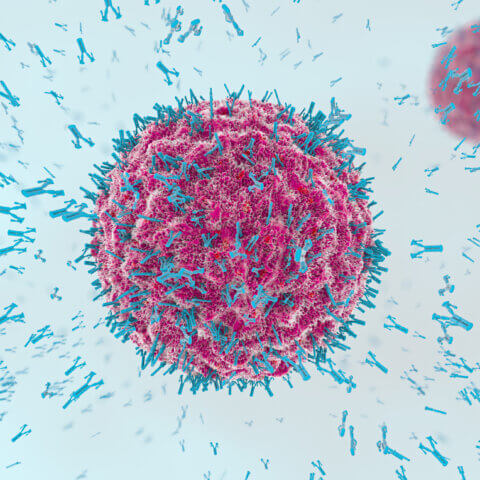Last Updated: November 3, 2025, 4 pm UTC
Since PDUFA VII was signed into law in September 2022, the U.S. Food and Drug Administration (FDA) has introduced a series of initiatives aimed at addressing the persistent challenges of rare disease development. Collectively, these efforts form a more complete regulatory “toolbox” spanning trial design, expedited pathways, engagement opportunities, and post-approval oversight. The goal is clear: build a framework that supports innovation while maintaining the scientific rigor and regulatory reliability that patients and clinicians depend oni.
Flexibility in rare disease programs has long been shaped by individual precedents instead of uniform frameworks. Increasingly, that flexibility is being codified through new pilots, guidance documents, and cross-center collaborations that clarify expectations for regulatory decision-making and support the design of scientifically rigorous, fit-for-purpose evidence packages for small, heterogeneous populations—without altering the FDA’s commitment to non-binding guidance.
Trial Design and Endpoint Development
One of the biggest barriers to progress in rare disease research remains the lack of validated endpoints and comprehensive natural history data. Traditional randomized trials are often impossible when patient populations are tiny or geographically dispersed. To help bridge these gaps, the Rare Disease Endpoint Advancement (RDEA) Pilotii, launched in 2023, provides a structured forum for collaboration between sponsors and regulators to develop fit-for-purpose endpoints.
Through RDEA, the FDA and sponsors can jointly explore endpoint concepts, validation methods, and statistical approaches that reflect the realities of rare disease trials. This program is more than a procedural shift—it represents an institutional recognition that meaningful measures of treatment benefit must often be built from the ground up.
In parallel, the Innovative Designs for Clinical Trials of Cellular and Gene Therapy Products in Small Populations (Sept 2025, draft)iii reinforces the Agency’s willingness to adopt alternative methodologies that better suit rare and regenerative medicine studies. Among the strategies gaining traction:
- Single-arm trials supported by external or natural-history controls
- Disease-progression modeling tied to broader complex innovative trial design/model informed drug development (CID/MIDD) interaction frameworksiv
- Adaptive and Bayesian designs that optimize resources and ethics
- Master protocols enabling multiple therapies to be studied within a shared infrastructure
- Externally controlled studies leveraging registries or real-world data, designed to ensure data relevance, completeness, control of confounding, and transparent access to underlying data in support of regulatory decision-makingv,vi
These options signal an enduring principle: flexibility is welcome, but rigor remains non-negotiable. The Agency continues to emphasize the importance of fit-for-purpose data, validated endpoints, and robust analytical design. As real-world evidence (RWE) becomes a more common element of rare disease submissions, sponsors are being challenged to ensure not just creativity in trial design but credibility in the evidence generated.
Expedited Pathways and Designations
Acceleration has always been central to the FDA’s mission in serious and life-threatening conditions. But recent updates show a distinct shift toward structure and transparency, especially for very small-populations and regenerative therapies.
The Rare Disease Evidence Principles (RDEP)vii proposed in 2025 is a key example. RDEP offers a defined process for determining when a single well-controlled trial, combined with confirmatory evidence, may be sufficient for approval. This is a meaningful clarification for developers facing practical limits on patient enrollment or trial replication. The program also outlines how sources like registries, natural history studies, or RWE can serve as supporting evidence reducing uncertainty around what “confirmatory” truly means.
Similarly, the updated draft guidance on Expedited Programs for Regenerative Therapies for Serious Conditionsviii consolidates earlier recommendations while refining eligibility criteria for accelerated review. FDA continues to emphasize manufacturing control and comparability in cell and gene therapies (CGTs) through dedicated guidances, a persistent challenge in cell and gene therapy as production scales from clinical to commercial.ix,x The guidances highlight the importance of maintaining product comparability through process changes, ensuring that rapid advancement does not come at the expense of quality.
Together, RDEP and the regenerative therapy guidance mark a significant policy evolution. They reflect the FDA’s broader effort to balance speed with oversight, offering sponsors clearer pathways to approval without loosening the standards for safety, efficacy, or manufacturing integrity.
Regulatory Engagement and Coordination
Equally notable is the FDA’s renewed focus on communication and cross-center coordination. Historically, developers navigating rare disease programs that touched both biologics and small molecules often encountered fragmented feedback. Recent initiatives aim to close those gaps. The Rare Disease Innovation Hubxi, launched in 2024, brings together experts from the Center for Biologics Evaluation and Research (CBER) and the Center for Drug Evaluation and Research (CDER) to promote a unified approach to rare disease product evaluation. This alignment helps ensure that similar products are reviewed under consistent scientific and regulatory standards, regardless of classification.
Engagement opportunities are also expanding through RISE Workshops (Rare Disease, Innovation, Support, and Engagement).xii These workshops create a platform for dialogue among FDA reviewers, sponsors, patients and patient advocates, and academic researchers, helping identify shared challenges and shape future guidance priorities.
Meanwhile, the Accelerating Rare Cures (ARC)xiii initiative continues to provide a more interactive channel for early, program-specific FDA feedback. ARC’s goal is to move collaboration further upstream, giving sponsors the chance to resolve scientific and regulatory questions before they become roadblocks. Together, these efforts represent a cultural shift toward proactive partnership, where regulatory predictability begins with transparent communication.
Post-Approval Monitoring
Rare and regenerative therapies often raise long-term questions that cannot be fully answered before approval. Recognizing this, the FDA has strengthened its expectations for post-market follow-up, particularly for CGTs where delayed adverse events may emerge years later. The draft guidance on Postapproval Methods to Capture Safety and Efficacy Data for Cell and Gene Therapy Productsxiv from 2025, sets out a structured framework for collecting and analyzing long-term data. It encourages sponsors to integrate multiple evidence streams, including:
- Electronic health records (EHRs) to monitor outcomes in real-world care settings
- Claims databases and registries to detect safety signals and long-term trends
- Patient-reported outcomes to capture meaningful functional and quality-of-life changes
By defining how these data sources can be used, the FDA is establishing a consistent expectation: accelerated approvals must be balanced by sustained accountability. In many cases, these approvals include postmarketing requirements (PMRs) for confirmatory studies, along with periodic status reports to verify long-term clinical benefit. Sponsors are encouraged to plan for data interoperability, traceability, and governance early so that follow-up studies remain feasible over extended observation periods. Where appropriate, these confirmatory obligations may also align with the proposed RDEP, which outlines how lifecycle evidence can support approval in ultra-small populations. vii
This post-approval focus reflects a growing recognition that regulatory oversight does not end at approval. Instead, it evolves with the product, guided by RWE that can validate long-term benefit and inform future therapeutic innovation.
What This Means Right Now
For rare disease and regenerative therapy developers, the FDA’s evolving framework represents both an opportunity and a mandate. Programs like RDEA, RDEP, ARC, and the Rare Disease Innovation Hub give sponsors and the rare disease community more ways to engage, clarify expectations, and align development strategies, but those tools come with greater responsibility for scientific transparency and quality.
Key takeaways from today’s environment:
- Structure Replaces Ambiguity. New programs are transforming one-off precedents into clear, repeatable processes, with structured pathways such as the RDEA Pilot Programii and the proposed RDEP frameworkvii offering guidance on endpoint development and evidence generation for ultra-small populations.
- Flexibility Still Requires Rigor. Statistical validity, robust data integrity, and clinical relevance remain the foundation of any successful submission. The FDA’s guidance on Considerations for the design and conduct of externally controlled trials for drug and biological productsᵛ and Real-world data: Assessing electronic health records and medical claims data to support regulatory decision-making for drug and biological productsvi reinforce expectations for fit-for-purpose data, control of confounding, and transparency in underlying data sources.
- Early Engagement is Essential. Early, iterative dialogue with regulators remains one of the most effective ways to align on study design and evidence expectations. Programs such as INTERACT meetingsxv and the guidance on Formal Meetings Between FDA and Sponsors or Applicants of PDUFA Productsxvi provide structured mechanisms for early scientific advice, complementing newer engagement opportunities like ARC, RISE, and RDEA.
Together, these initiatives build a regulatory environment that rewards preparedness, evidence-based innovation, and collaboration. The pathway may be clearer, but it still demands discipline.
Looking Ahead
Innovation in rare disease and regenerative medicine continues to accelerate. Advances in gene editing, RNA-based therapies, and precision diagnostics are expanding what is scientifically possible and simultaneously testing the limits of existing regulatory systems.
The FDA’s recent initiatives reflect a deliberate effort to evolve alongside this science. By transforming flexibility into structure, promoting early engagement, and strengthening post-market expectations, the Agency is laying the groundwork for sustainable innovation that balances progress with patient protection.
As these programs mature, their effectiveness will depend on consistent application and thoughtful use of real-world data. Developers that engage early, design fit-for-purpose trials, and align manufacturing and monitoring practices with FDA expectations will be best positioned to benefit from this new era of regulatory clarity.
In rare disease development, the path forward is more defined than ever. But success depends on applying the right tools at the right time—and partnering with experts who understand how to align science and regulation. Connect with our rare disease team to explore strategies that can accelerate your program.
ABOUT PREMIER RESEARCH:
Premier Research International LLC (Premier) is a global leader in clinical research and consulting services with expertise in driving an efficient and effective path to market for the life sciences industry.
Premier is built with the needs of biotech in mind, turning breakthrough science into life-changing drugs, devices, and diagnostics by addressing trial complexity, overcoming development hurdles, and demonstrating product value.
Leveraging deep therapeutic expertise, innovative technology, and product development operational proficiency—from preclinical planning to clinical trial execution and commercialization—our integrated approach offers personalized, end-to-end solutions to identify the pertinent data and insight necessary to make informed decisions earlier and deliver accelerated development timelines for a smarter, faster path to approval. To learn more visit premier-research.com.
REFERENCES:
[i] U.S. Food and Drug Administration. (n.d.). FDA Rare Disease Innovation Hub. https://www.fda.gov/industry/medical-products-rare-diseases-and-conditions/fda-rare-disease-innovation-hub
[ii] U.S. Food and Drug Administration. (n.d.). Rare Disease Endpoint Advancement (RDEA) Pilot Program. U.S. Department of Health and Human Services, Food and Drug Administration. https://www.fda.gov/drugs/development-resources/rare-disease-endpoint-advancement-pilot-program
[iii] U.S. Food and Drug Administration. (n.d.). [Innovative Designs for Clinical Trials of Cellular and Gene Therapy Products in Small Populations (Sept 2025).] [PDF]. https://www.fda.gov/media/188892/download
[iv] U.S. Food and Drug Administration. (2020, December 16). Interacting with the FDA on complex innovative trial designs for drugs and biological products: Guidance for industry . U.S. Department of Health and Human Services. https://www.fda.gov/regulatory-information/search-fda-guidance-documents/interacting-fda-complex-innovative-trial-designs-drugs-and-biological-products
[v] U.S. Food and Drug Administration. (2023). Considerations for the design and conduct of externally controlled trials for drug and biological products (Draft guidance). U.S. Department of Health and Human Services, Food and Drug Administration. https://www.fda.gov/regulatory-information/search-fda-guidance-documents/considerations-design-and-conduct-externally-controlled-trials-drug-and-biological-products
[vi] U.S. Food and Drug Administration. (2024). Real-world data: Assessing electronic health records and medical claims data to support regulatory decision-making for drug and biological products (Final guidance). U.S. Department of Health and Human Services, Food and Drug Administration. https://www.fda.gov/regulatory-information/search-fda-guidance-documents/real-world-data-assessing-electronic-health-records-and-medical-claims-data-support-regulatory
[vii] U.S. Food & Drug Administration. (2025, September 3). CDER/CBER Rare Disease Evidence Principles (RDEP): A proposed process to facilitate the approval of drugs to treat rare diseases [Web page]. https://www.fda.gov/industry/fda-rare-disease-innovation-hub/cdercber-rare-disease-evidence-principles-rdep
[viii] U.S. Food and Drug Administration. (2025, September). Expedited programs for regenerative medicine therapies for serious conditions: Draft guidance for industry [Draft guidance for industry]. https://www.fda.gov/media/188874/download
[ix] U.S. Food and Drug Administration. (2020, January). Chemistry, manufacturing, and control (CMC) information for human gene therapy investigational new drug applications (INDs): Guidance for industry (Final guidance). U.S. Department of Health and Human Services, Food and Drug Administration. https://www.fda.gov/regulatory-information/search-fda-guidance-documents/chemistry-manufacturing-and-control-cmc-information-human-gene-therapy-investigational-new-drug
[x] U.S. Food and Drug Administration. (2023, July 14). Manufacturing changes and comparability for human cellular and gene therapy products; Draft guidance for industry (Draft). Federal Register, 88 FR 45222–45223. https://www.federalregister.gov/documents/2023/07/14/2023-14917/manufacturing-changes-and-comparability-for-human-cellular-and-gene-therapy-products-draft-guidance
[xi] U.S. Food and Drug Administration. (n.d.). FDA Rare Disease Innovation Hub. https://www.fda.gov/industry/medical-products-rare-diseases-and-conditions/fda-rare-disease-innovation-hub
[xii] U.S. Food & Drug Administration. (2025, June 13). Rare Disease Innovation, Science, and Exploration Public Workshop Series; Request for Comments [Notice]. Federal Register, 90(113), 25056–25058. https://www.federalregister.gov/documents/2025/06/13/2025-10801/rare-disease-innovation-science-and-exploration-public-workshop-series-request-for-comments
[xiii] U.S. Food and Drug Administration. (n.d.). Accelerating Rare Disease Cures (ARC) Program. https://www.fda.gov/about-fda/center-drug-evaluation-and-research-cder/accelerating-rare-disease-cures-arc-program
[xiv] U.S. Food & Drug Administration. (2025, September). Postapproval methods to capture safety and efficacy data for cell and gene therapy products: Draft guidance for industry. U.S. Department of Health and Human Services, Food and Drug Administration. https://www.fda.gov/regulatory-information/search-fda-guidance-documents/postapproval-methods-capture-safety-and-efficacy-data-cell-and-gene-therapy-products
[xv] U.S. Food and Drug Administration. (n.d.). Office of Tissues and Advanced Therapies (OTAT) INTERACT Meetings. https://www.fda.gov/vaccines-blood-biologics/cellular-gene-therapy-products/otp-interact-meetings
[xvi] U.S. Food and Drug Administration. (2017, December). Formal meetings between the FDA and sponsors or applicants of PDUFA products: Guidance for industry. U.S. Department of Health and Human Services, Food and Drug Administration. https://www.fda.gov/regulatory-information/search-fda-guidance-documents/formal-meetings-between-fda-and-sponsors-or-applicants-pdufa-products

 Webinar
Webinar 


 Perspectives Blog
Perspectives Blog 